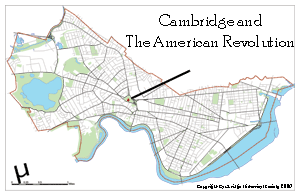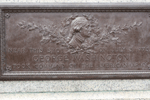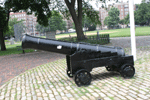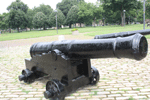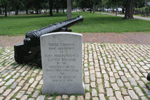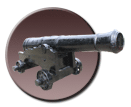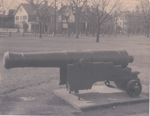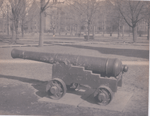The Cambridge Common
Cambridge Common was established in 1630 as a component of the original town plans. In the seventeenth century, popular farming techniques necessitated a common area of undivided land. At that time, this included woodlots as well as ox, sheep, and cow pastures. The Cambridge Common, which stretched from the Burying Ground in Harvard Square to Linnaean Street, was actively used as a communal cow pasture and comprised approximately 85 acres. Throughout the early 1770s, it was also the site of local militia training and drills. It was at the Common that the enraged crowd of 4,000 gathered in 1774 response to the Powder Alarm.
On the fateful night of April 18, 1775, it was William Dawes, Paul Revere’s less famous patriot contemporary, who rode through the Common en route to Concord, warning Cantabridgians of the encroaching British soldiers. Having landed on Lechmere Point in East Cambridge, they were marching toward Concord to arrest the patriot leaders, Samuel Adams and John Hancock, and seize the munitions in the Concord Powderhouse. The next day, a column of British reinforcements led by Lord Percy, also passed through the Common en route to Concord.
After the Battle of Lexington and Concord, New England militias gathered on the Common and camped out, waiting for their next orders. By two days, 10,000 patriots had arrived, and in the following months more brigades from other colonies trickled in. Thousands of men offered their support to the Revolutionary Cause. These men were passionate civilians not soldiers Many lacked proper training. The amateurish military ability of the American forces was a problem that necessitated a quick solution. Washington himself confessed, “I daresay the Men [of the Continental Forces] would fight very well (if properly Officered) although they are exceedingly dirty and nasty people.”
On July 3, 1775, American legend has it that Washington took command of the Continental Army under an elm tree on the Common. The tree was blown down in a 1923 storm, but a scion of the famous tree still stands at an alternative site in the Common today, and a plaque commemorating the original location of the tree can be found in the intersection of Mason and Garden streets.
Following the Battle of Lexington and Concord, as the numbers of soldiers grew, a slew of makeshift barracks, huts, and tents popped up across Cambridge Common. The conditions were deplorable and the stench of too many men in one place hung heavily in the air. People who had never left their own villages were now brought together into this mix. Predictably, as these men lived side by side in close, provisional quarters, regional conflicts soon arose.
In a letter to his brother, Washington revealed his misgivings, “I believe I may, with great truth affirm, that no Man perhaps since the first Institution of Armys ever commanded one under more difficult Circumstances than I have done – to enumerate the particulars would fill volume – man of my difficulties and distresses were of so peculiar a cast that in order to conceal them from the Enemy, I was obliged to conceal them from my friends, indeed from my own Army.”
On March 17, 1776, when the British evacuated Boston and the Siege was officially over, Washington and the Continental Army made preparations for evacuating Cambridge, as well.Cambridge Common Today
